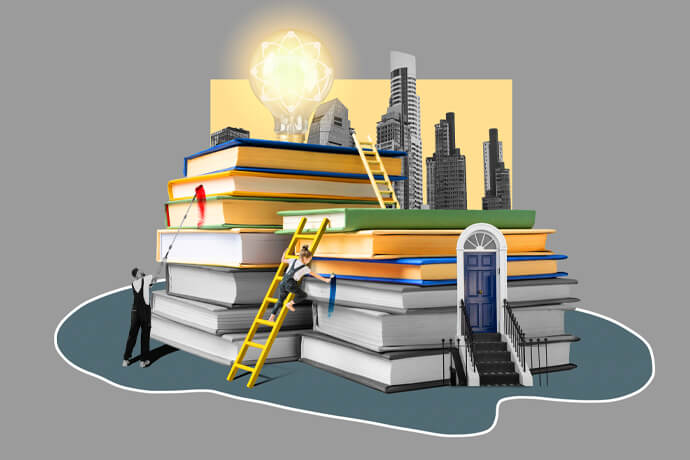 SPEAKERS
SPEAKERS
Creativity and innovation in education are vital components that promote a dynamic and engaging learning environment.

Creativity in education encourages students to explore their own unique perspectives, fostering self-expression and developing critical thinking skills. It encourages students to approach problems from multiple angles, encouraging divergent thinking and cultivating a culture of innovation.
Innovation, on the other hand, involves introducing new teaching methods, technologies, and approaches to enhance learning outcomes. It encourages educators to adapt to the evolving needs of students and harness the potential of emerging technologies. Innovative practices include project-based learning, flipped classrooms, blended learning, and gamification, among others.
When you integrate creativity and innovation into education, students become active participants in their own learning journey. They are encouraged to question, experiment, collaborate, and take risks. This empowers them to develop essential 21st-century skills such as communication, critical thinking, problem-solving, adaptability, and collaboration.
The current trends in the education system and workforce development reflect the evolving needs of the modern world. One significant trend in the growth of education is the integration of technology, which includes online learning, virtual classrooms, and the use of educational apps and platforms.
Education is moving away from a one-size-fits-all approach, focusing on individualized instruction that caters to each student's strengths, interests, and learning pace. Competency-based education emphasizes the mastery of skills and knowledge rather than traditional grade-level progression.
However, these trends also come with challenges. The digital divide remains a significant hurdle, as not all students have equal access to technology and the internet.
Workforce development faces challenges in keeping up with rapidly changing job market demands. Innovation is a much-needed concept in this scenario. The increasing automation and AI technology require workers to have adaptable skills, such as critical thinking, problem-solving, creativity, and collaboration. Bridging the skills gap and providing ongoing training and upskilling opportunities to the workforce is essential to meet the demands of a dynamic and evolving job market.
Present trends in the education system and workforce development highlight the need for technology integration, personalized learning, and skills-based education.
Lifelong learning plays a crucial role in career growth and development. In today's rapidly changing work environment, acquiring new lifelong learning skills and knowledge is essential to remain competitive and adaptable. It empowers individuals to continuously upgrade their expertise, explore emerging trends, and embrace new technologies. Learning fosters personal and professional growth by promoting critical thinking, problem-solving, and creativity. Additionally, it enhances career prospects by increasing marketability, expanding professional networks, and opening up new opportunities. It enables individuals to stay relevant, embrace new challenges, and navigate career transitions with confidence. With investment in lifelong learning, individuals can achieve continuous career advancement and fulfillment.
Integrating innovation in education and workforce training can transform the learning experience and prepare individuals for the demands of the future.

Below are some best practices to effectively incorporate innovation:
Implementation of these best practices, education and workforce training can embrace innovation and provide learners with the knowledge, skills, and competencies required to thrive in a rapidly evolving world.
The Future of Education and its Impact on the Workforce
The future of education holds significant implications for the workforce. As technology advances, automation and AI will reshape industries, leading to a shift in the skills required by the workforce. Education needs to adapt accordingly. The emphasis will be on developing transferable skills such as critical thinking, problem-solving, creativity, adaptability, and digital literacy. Lifelong learning will become crucial as individuals will need to continually upskill and reskill to remain employable. Additionally, flexible and personalized learning pathways will be essential to cater to diverse learner needs. Collaboration between educators, industry, and policymakers will be necessary to bridge the gap between education and the evolving demands of the workforce.
What are the types of innovation in teaching and learning?
There are several types of innovation in teaching and learning, including technological innovation, pedagogical innovation, curriculum innovation, and organizational innovation.
How can innovations in education technology improve the learning experience?
Innovations in education technology can improve the learning experience by providing interactive and engaging learning materials, personalized instruction, and access to vast educational resources. The goal is to facilitate collaboration and communication and promote self-paced and adaptive learning approaches.
What is the importance of lifelong learning for career growth and development?
Lifelong learning is crucial for career growth and development. It allows individuals to acquire new skills, stay updated with industry trends, adapt to evolving job requirements, enhance marketability, foster personal growth, and remain competitive in the ever-changing professional landscape.
What are the types of innovation in teaching and learning?
The types of innovation in teaching and learning include technological innovation, which involves integrating digital tools/platforms and pedagogical innovation, focusing on new teaching methods/approaches. In addition, there is also curriculum innovation, involving designing and developing new curriculum content and organizational innovation, focusing on improving the overall structure and management of educational institutions.